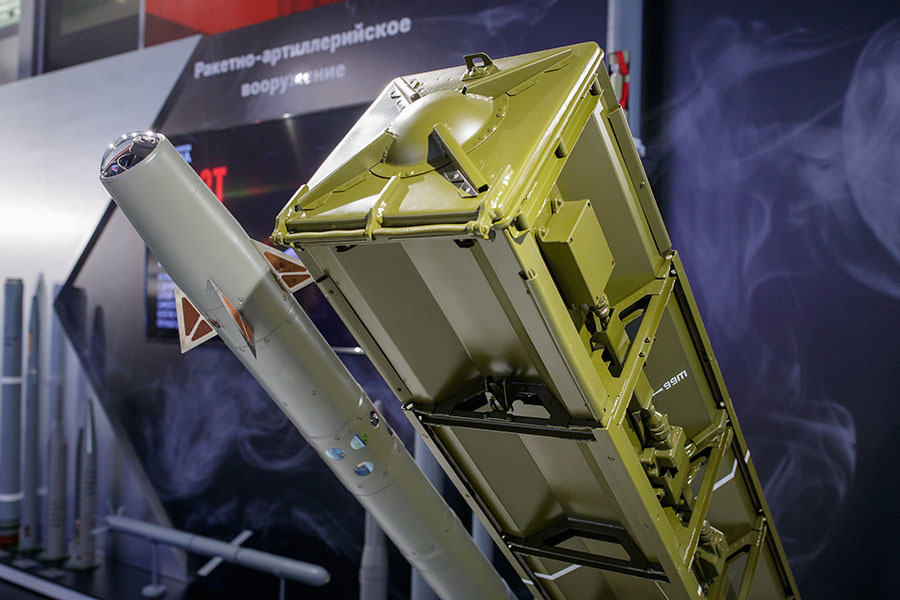Field tests of the Strela 9M333 anti-aircraft guided missile (SAM) have been completed at the Donguz test range in the Orenburg region, according to the YouTube channel of the Kalashnikov concern (Izhevsk).
The ammunition was fired at night and successfully hit an air target.
“The missile has three modes of seeker operation: photocontrast, infrared and jamming, which is its most important advantage over other missiles of this class.
SAM "Strela 9M333" allows you to fire on the principle of "shot - forget", - stressed in the concern.
According to the developer, the new ammunition is intended for the destruction of low-flying aircraft and helicopters in conditions of the use of optical interference, as well as "remotely piloted aircraft (RPV) and cruise missiles."
Kalashnikov has already launched serial production of Strela 9M333 in the interests of the RF Ministry of Defense.
"Flies to the target by itself"
Earlier, "Strela 9M333" was presented at the international military-technical forum "Army-2020".
The caliber of the ammunition is 120 mm, the mass is 41 kg, the mass of the warhead is 5 kg, the slant range of target destruction is up to 5 km, the flight height of the targets being hit is up to 3.5 km, the average missile speed is 550 m / s.
Experts say that the key advantage of Strela 9M333 is the implementation of the “fire and forget” principle.
It lies in the fact that after the launch of the rocket, the combat crew does not need to accompany the ammunition.
This allows military personnel to instantly leave the position in order not to fall victim to return fire.
Model of the Arrow 9M333 missile at the Army-2020 forum
© Concern "Kalashnikov"
“The name of this principle speaks for itself: you detect a target, catch its aiming mark, then launch - and the rocket flies to the target itself, without the participation of the operator.
At this moment, you can make maneuvers: dodge, leave.
This increases the survivability, reliability of the system as a whole, its accuracy, and allows it to hit more targets, "military expert Alexei Khlopotov explained in an interview with RT.
He recalled that before, manual or semi-automatic control was used, in which the accuracy of hitting air targets depends quite strongly on the skill of the operator.
In addition, the crew of a combat vehicle is largely limited in maneuverability.
According to the Ministry of Defense of the Russian Federation, "Strela 9M333" along with other ammunition will enter the arsenal of the upgraded short-range anti-aircraft missile system "Strela-10MN" ("Strela-10M4"), adapted for shooting in the dark.
The air defense missile system was developed at JSC “Precision Engineering Design Bureau named after
A.E.
Nudelman ".
“A feature of this complex is the 9M37 and 9M333 self-guided solid-propellant anti-aircraft guided missiles, which make it possible to implement the“ fire and forget ”principle and engage air targets at altitudes up to 3500 m and a range of up to 5000 m,” the military department said.
Streloi-10MN is used to arm motorized rifle subunits and Blue Berets units responsible for air defense.
The shelling of targets from this air defense system can be conducted on a head-on and catch-up course.
Thanks to its unique equipment, Strela-10MN is capable of intercepting air targets at night, in adverse weather conditions, and even with powerful interference from the enemy.
For this, the complex has a television system, a scanning unit, automatic target acquisition and tracking.
In the airborne troops "Strela-10MN" is operated with the automated control system "Barnaul-T" developed by JSC "NPP" Rubin "(Penza).
The equipment of this complex is mounted on the tracked base of the BTR-MDM "Rakushka" and is parachuted.
Author: Testing anti-aircraft guided missile 9M333
The main tasks of the Barnaul-T system are reconnaissance of low-flying air targets, collection (reception) of information about the air situation and target distribution.
In addition to Strela-10, the automated system is capable of operating in a single information network with portable Verba air defense systems and Buk-type medium-range complexes.
"The Strela-10MN air defense missile system with increased capabilities and compact low-altitude radar target detectors in combination with the Barnaul-T automated control system will provide effective cover for ground operations of the landing force, informing in advance about the approaching air targets," the RF Ministry of Defense said.
The developer considers the main advantages of Strela-10MN to be high reliability and fire performance, ease of operation, secrecy of the firing preparation process, survivability and effectiveness of combat use.
"Promote capacity building"
According to experts, with the advent of the Strela 9M333 missile, the combat potential of the Strela-10MN complex will significantly increase.
In addition, this air defense system will surpass the capabilities of the flexible anti-aircraft gun "Gibka-S", which is mounted on armored vehicles "Tiger-M".
This air defense system is also intended for operation in units of the RF Ground Forces and the Airborne Forces in order to cover ground groupings.
The missiles in it are guided by a laser beam.
According to experts, the main specialization of the Gibka-S installation is the fight against unmanned aerial vehicles, while the Strela-10MN is a universal weapon.
In a commentary on RT, the editor-in-chief of the National Defense magazine Igor Korotchenko stressed that Strela-10MN would increase the effectiveness and accuracy of fire.
He noted that the modernization of the air defense arsenal is part of the policy of the Ministry of Defense to increase the share of modern models in the Russian army.
“Any new developments contribute to strengthening the potential of the Russian armed forces.
Moreover, we see hundreds of successfully completed projects.
In this sense, the Kalashnikov concern with its new anti-aircraft missile is working for an overall positive result, ”Korotchenko said.

